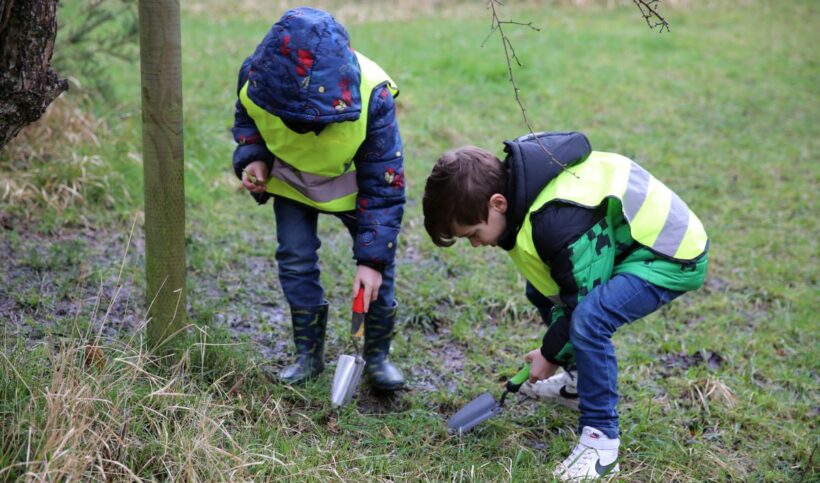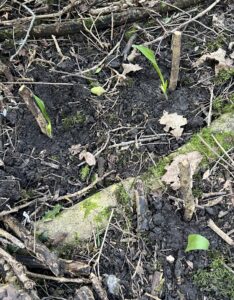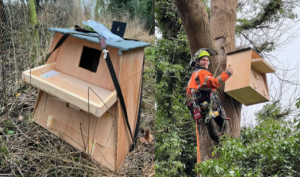Finding the right fit: Springtime planting to improve our biodiversity
Thursday 28th March 2024

(click the audio if you’d prefer to listen to this blog)
This year will mark my eighth year with The Oxford Trust, and even before we moved to our centre here at the Stansfeld Park site five years ago, I was a regular visitor to the woodland. In those eight years I have never known it to be so damp. Our site isn’t alone. Gardens and parks around the country are all struggling in this dreich start to the year. But one thing you can always be sure of is that nature persists. Soon the puddles and mud will begin to dry in the spring sunshine and all this moisture will be gratefully drawn upwards by the newly emerging growth.
Improving biodiversity
One of our long-term management goals is to improve the biodiversity of the park and to achieve this we have been introducing appropriate species. Drawing on my knowledge of the geological and climatological conditions of the area, I have looked to native plants that I have seen survive in similar habitats. Interestingly, land managers are starting to look at species that were previously considered more southerly in their distribution or growing from seed collected in warmer climates (read more about this here).
Uncooperative residents
My attempts in the past have been reasonably successful but my efforts are often undone by the unwillingness of some of our existing residents to embrace this change. After planting 300 bluebell bulbs a few years ago, I soon discovered that badgers are particularly partial to digging them up, while deer love to browse them if they survive long enough to grow.
Since then I have protected the area with fencing, which has been reasonably successful. However, every now and then, the wildlife seems to work together and I’ll find a tunnel crafted by a badger, then enlarged as a thoroughfare by deer, leading to an area of disturbed soil with nothing growing. Other species such as garlic mustard, forget-me-not and wild primrose seem to be relatively unpalatable, as they survive untouched throughout the woodland.
Choosing carefully
This spring we planted 250 ‘in the green’ bulbs with our willing volunteers, including families who enjoyed the ‘Spring Seeds’ Nature Club earlier this month. These ‘in the green’ bulbs are already growing and viable and can provide spring colour this season, especially when planted with a handful of compost into nice moist soils! I chose a mixture of native species I know do well in this geographical area, and some that feature on the Royal Horticultural Society’s (RHS’s) deer ‘least wanted’ list (read more here). Among them were native snowdrops, wood anemone and lesser celandine. So far my defences have only been breached once (see video) and even then only a little damage was caused before I shored up the barrier. The hope is to eventually reach a critical mass of plants so that even the grazing pressure cannot cause too much impact, but for now the fence will remain!
Caught in the act. A badger roams our fenced off area.
Experimenting
In the name of science, as well as planting in my fenced area, I also put in some experimental plots that are open access so that we can determine which species are worth planting in the future. So far the wildlife does not seem to have a taste for wild garlic, which is good as, if we ever get enough to harvest, I most certainly do!

In-text links
Did you listen to this blog and would you like to follow the links mentioned?
- Forestry England’s blog: Diverse forests in a changing climate
- Royal Horticultural Society’s Deer Resistant Plants
Feature image
Two children attending Nature Club with their families in March were among those who planted new bulbs and seeds around our woodland.
Follow Roger on Instagram @oxfordnaturescientist for more insight into our woodland.



